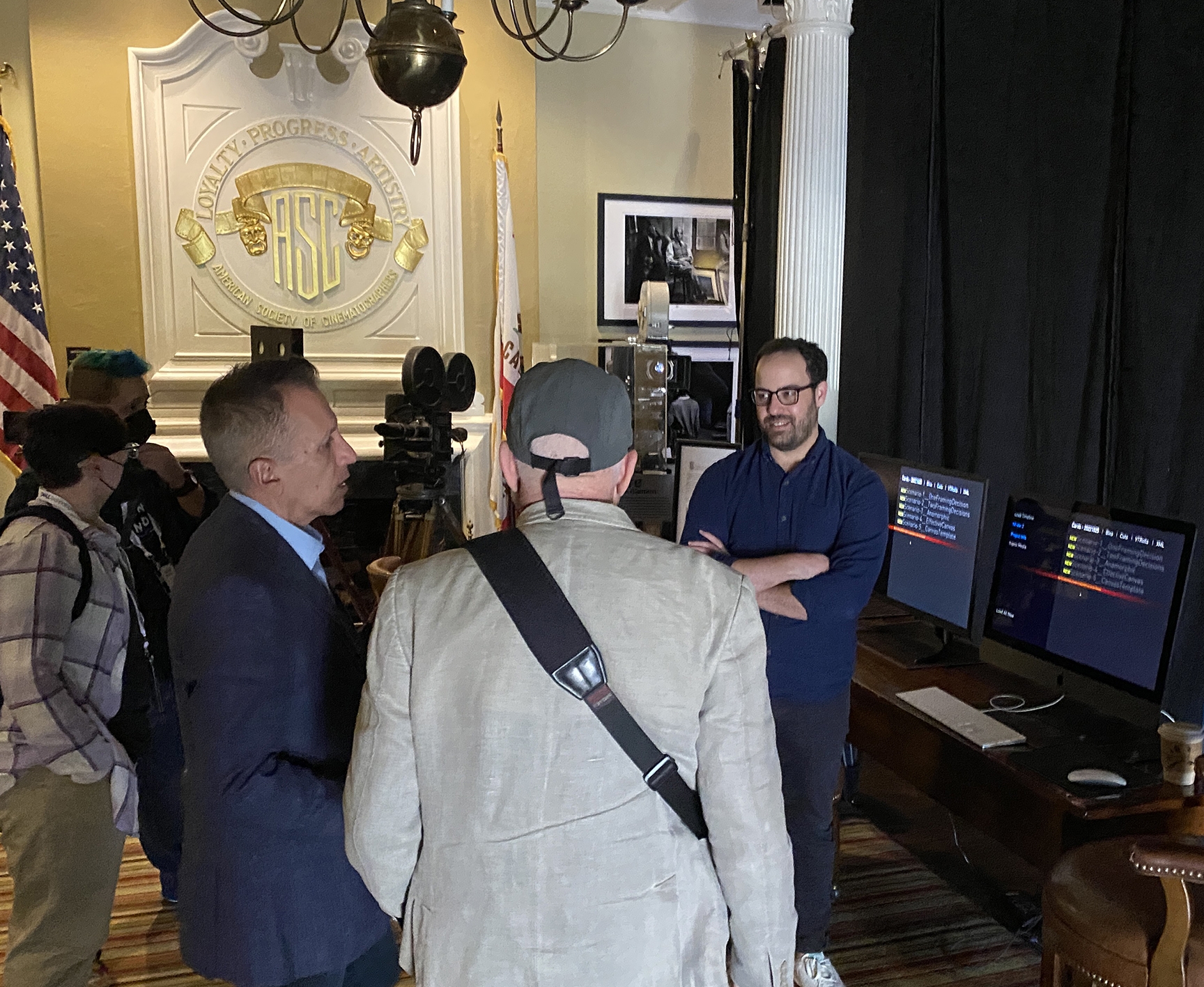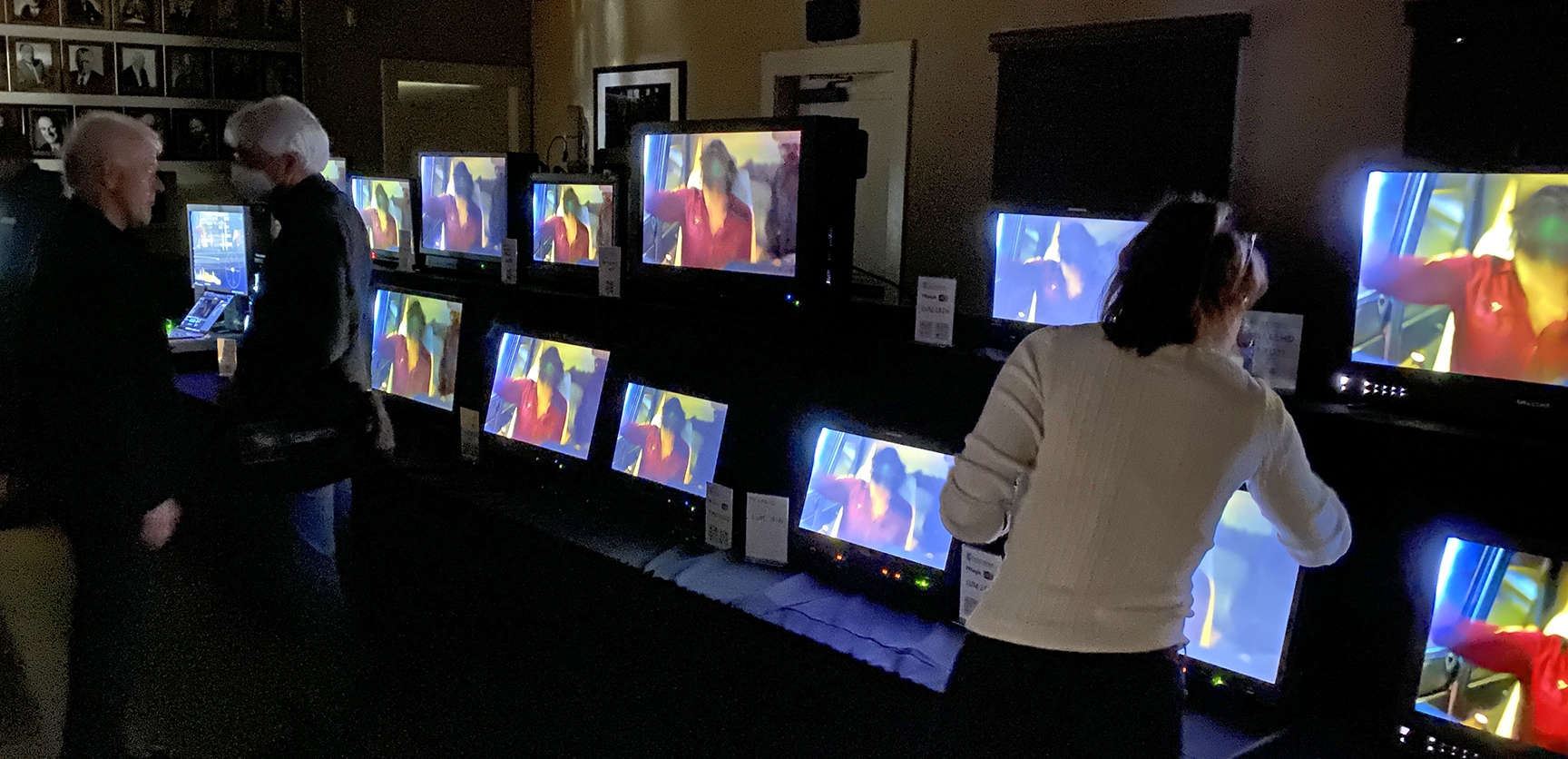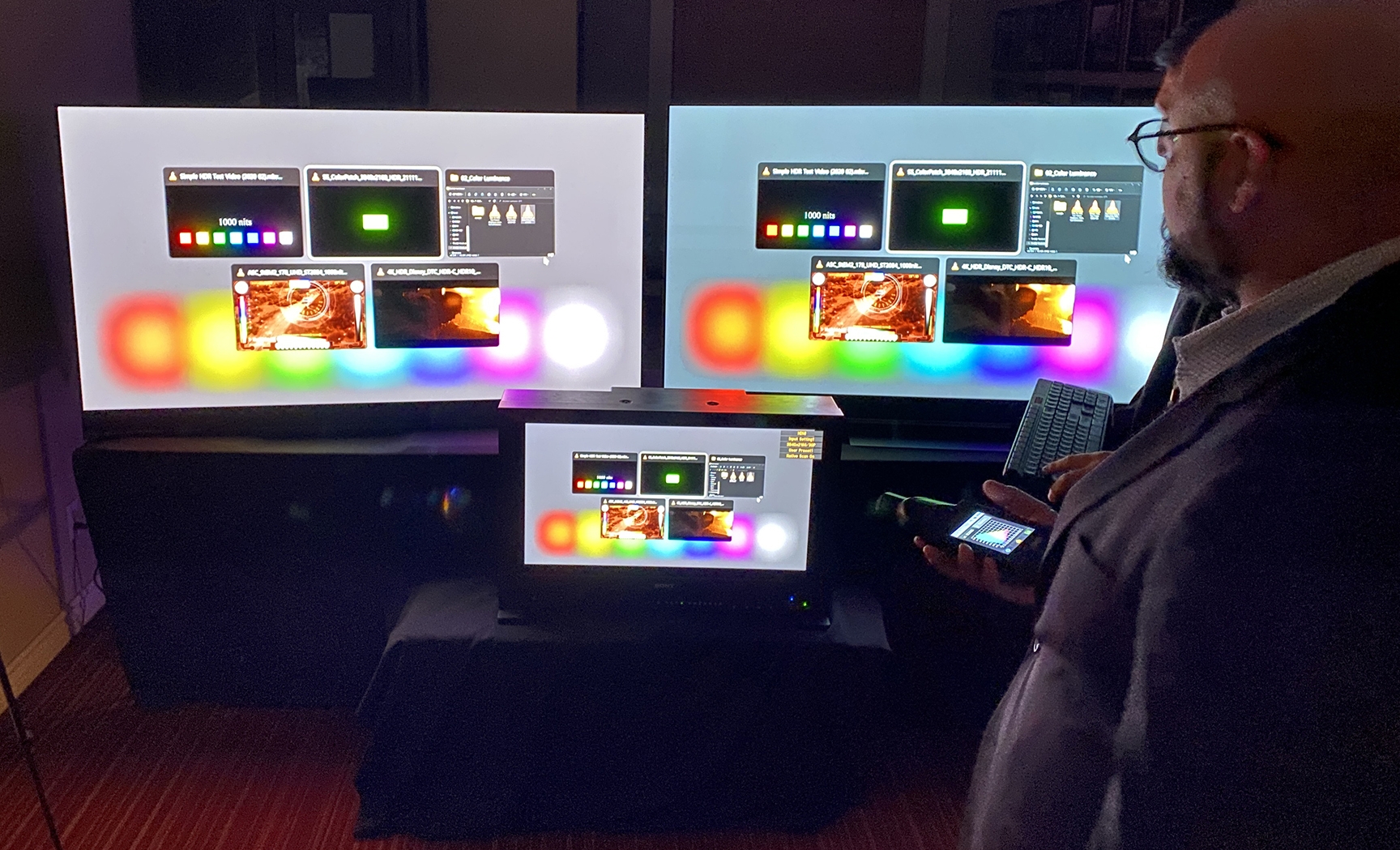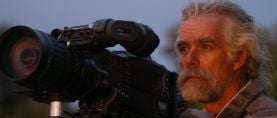
2022 ASC MITC Technology Showcase
The historic ASC Clubhouse was the venue for demos of next-generation tools that will shape the future of cinematography.
On October 25, several of the most active committees of the ASC Motion Imaging Technology Council (MITC) held an impressive show-and-tell session at the ASC Clubhouse in Hollywood to coincide with the SMPTE Media Technology Summit (Oct. 23-27) that took place at the nearby Lowes Hotel.
Organized by ASC associate member Gary Mandle — Baylor University research scientist and vice-chair of the ASC MITC Professional Monitor Committee — the event took over the entire Clubhouse and featured presentations from the Professional Monitor, UHD, Lighting, Next Generation Cinema Display, Motion Imaging Workflow committees.

“Our goal from this event was to showcase the many incredible contributions that the MITC has made to the industry and how they are helping to further technology that improves filmmaking,” says Mandle. “Since these projects are not often publicized, it’s important to show the industry that the MITC is leading the way on these essential topics. Many of the projects undertaken by the ASC MITC are not cost-effective for a single manufacturer to develop or they may have political and market issues, given the manufacturer’s relationship with their technology. Through the development of the MITC, these efforts are significantly less political and don’t have market limitations. Instead, they come from an educated and neutral organization designed by the people using them. It was also important to illustrate, through the MITC Technology Showcase, that we are not an isolated organization working in a vacuum. Instead, we’re closely partnered with AMPAS and SMPTE and many other organizations as is integral to the technical part of this industry.”
Attendees were first greeted with a demonstration by the Motion Imaging Workflow’s ASC FDL subcommittee (see AC Nov ’22), with a practical demonstration of the upcoming Framing Decision List technology. The ASC FDLs are a set of instructions for how to view media in any application. The metadata application provides a mechanism to document framing decisions through all phases of a project’s life cycle, from pre-visualization through postproduction. The FDL can exist in the form of a sidecar JSON file or embedded into another data structure like camera original files. Any time an application is rendering media to go to another department or person, an accompanying set of ASC FDL data should be created to inform how to view the newly generated content. ASC FDL data can be applied to view the intended framing. This creates an integrity of the framing intent from the original camera, as determined by the director and cinematographer, all the way through the production pipeline with pixel accuracy. No more guessing framing or interpreting framing charts.
The FDL is in its authoring stages and is expected to be released in beta testing before the end of the 2022. On hand to demonstrate the technology and its importance was David Hall, production technologist for Netflix and chair of the FDL subcommittee and ASC associate member Greg Ciaccio, Sr. Director Postproduction Original Content for Imax and chair of the Motion Imaging Workflow committee, which oversees the FDL. Also discussed in this area was the ASC MHL, or Media Hash List, an important metadata application that tracks the integrity of all media files along with a chain-of-custody and verification of data. (More on the ASC FDL and ASC MHL at www.github.com/ascmitc)
Also in the main room was a demonstration of the "Filmmaker Mode," a product of the UHDTV Alliance and the ASC MITC UHDTV committee presented by Michael Zink — Vice President Engineering and Creative Technologies for Warner Bros and co-chair of the UHDTV committee. Filmmaker Mode is integrated in the products of several consumer TV manufacturers and, when activated, automatically disables all post-processing (e.g. motion smoothing, sharpening et al) for SDR and HDR content preserving the correct aspect ratios, colors, and frame rates for a more cinematic experience on Ultra HD TVs. This mode, which in some cases – such as content from Amazon Prime – can be automatically triggered, while in other cases it must be activated by the user, turns off monitor interpolation, overscan, excess sharpening, noise reduction and other “enhancements” to present a more authentic representation of motion picture content. (More information on Filmmaker Mode at www.filmmakermode.com)
In Billy’s Bar, the Next Generation Cinema Display Committee, under co-chair and ASC associate member Joachim “JZ” Zell — color scientist and head of HDR Content Workflow for Barco — presented the ASC MITC StEM2 (Standard Evaluation Material 2.0) on an HDR display. The StEM2 Working Group, a project chaired by this author, who also directed and wrote The Mission, a 17-minute short film, carefully crafted by ASC cinematographers and associate members, image scientists, colorists, manufacturers and technologists to provide a cinematic and diverse piece of media that may be freely used to test theatrical projection, theatrical emissive displays, professional monitors, consumer monitors and postproduction image processing software and hardware. The Mission was photographed by Christopher Probst, ASC; executive produced by ASC MITC chair Curtis Clark, ASC; produced by this author, Wendy Aylsworth and Joachim Zell; visual effects supervision by David Stump, ASC; 2nd unit director/cinematographer and stunt coordination by Steven Shaw, ASC; postproduction supervision by associate member Joachim “JZ” Zell; and metadata supervision by associate member Greg Ciaccio.
The short film contains a wide variety of locations including daylight exterior and interior, night exterior and interior, bright high-contrast desert to dimly lit, dank cave. The narrative also includes high action, multiple examples of HDR exposures, high-color-gamut material, high-resolution detail, diversity of skin tones, CG animation and the latest production techniques including in-camera visual effects shot on an in-camera visual effects LED volume stage.
Demonstrations were given presenting The Mission in 4K HDR Rec.2020 and 4K SDR Rec.709 as well as a 21-minute behind-the-scenes documentary on the making of StEM2. Also presented was an informational brochure on the Academy Color Encoding Software (ACES) integration into the StEM2 project and information on the Academy Software Foundation Digital Production Example Library which hosts the StEM2 and all of its various forms. (More information on StEM2 can be found at www.theasc.com/stem2 ACES at www.acescentral.com and the ASWF DEPL at www.dpel.aswf.io)

The ASC Boardroom became the site of a massive on-set monitor comparison with 18 professional monitors from nearly every company in the industry side-by-side playing the same evaluation material. Under the leadership of ASC MITC Professional Monitor committee chair Jim Fancher and Mandle, this eye-opening display of displays offered attendees an opportunity to look at the strengths and weaknesses of each offering. Each individual manufacturer was invited to set up their display and to calibrate it to the best presentation of their technology. The attendees then viewed a 42-minute compilation of evaluation material including test charts and representative footage (including the ASC MITC StEM2). Manufacturers were on-hand to answer questions from attendees and address concerns or requests.
The Member’s Office was host to yet another monitor display as Samsung presented their latest QD-OLED (quantum-dot organic LED) display technology side-by-side with a more standard white OLED display and the industry benchmark Sony X310 professional reference monitor.

QD-OLED, a self-luminous display, consists of a TFT (thin film transistor) layer, which is an electronic circuit that controls the light-emitting layer, a light source that emits light, and a QD light-emitting layer that expresses colors using the light emitted from the source.
QD-OLED uses blue LEDs, which have the strongest light energy, as a source, so it can achieve relatively bright luminance. In particular, this QD technology utilizes a front light-emitting method that efficiently utilizes light, enabling a simpler and more efficient structure, unlike LCDs that require a backlight, providing a thin and lightweight display.
Finally, ASC associate member Tim Kang — cinematographer, Principle Engineer, Color & Imaging for Quasar Science and chair of the ASC MITC Lighting Committee — presented a powerful display of the latest in image-based lighting (IBL) technology. An ICVFX LED wall was constructed in the Clubhouse’s great room from Roe and Kang brought in extensive advanced pixel mappable LED fixtures to light the two models in front of the wall.

The fundamental premise of on-set IBL is that the images appearing on a lighting volume, projected by an array of different types of video-compatible and spectrally optimized fixtures, produce varying degrees of emissive lighting similar to real environments, while additional lighting on actors and physical objects can come from LED ceilings or backings. Combining these tools can deliver highly realistic results.
The primary backing/ceiling LED screen’s content can be synchronized with other, off-camera LED screens and video-compatible fixtures to create additional reflections and interactive world lighting effects via the Digital Multiplex (DMX) communication protocol and its ethernet-based transports, ArtNet or sACN.
This particular On Set Image-Based Lighting Demonstration put together by the ASC MITC Lighting Committee had an array of fixtures calibrated to output Rec.709 colorimetry with the fullest possible spectral output to light a downtown city office environment at different times of day.
The Roe BP2 panels were augmented with lighting from Aputure, ETC, Hive, Litegear, Mole-Richardson, Quasar Science and Prolycht. ASC members Craig Kief, David Stump and Quyen Tran were also on-hand at the Lighting Committee’s request, to provide demos of the IBL technology and answer questions.
The event was attended by well over 200 ASC active members, associate members and SMPTE members. In addition to the annual progress report of the ASC MITC which was published in the September issue of the SMPTE Motion Imaging Journal, the MITC Technology Showcase was a wonderful opportunity to share the extraordinary work done by the ASC’s Technology Council.
Jay Holben is an associate member of the ASC and AC's technical editor.






